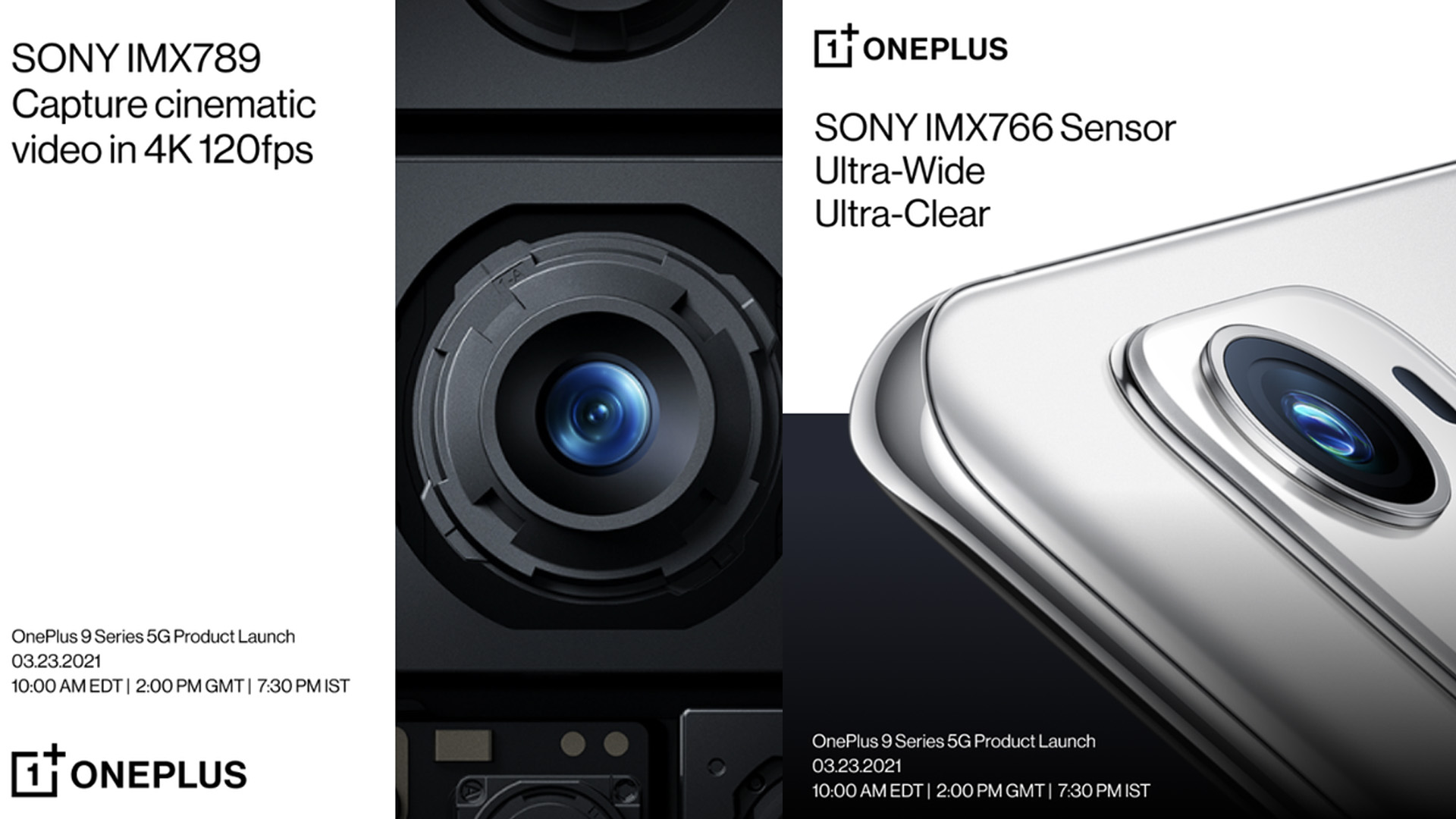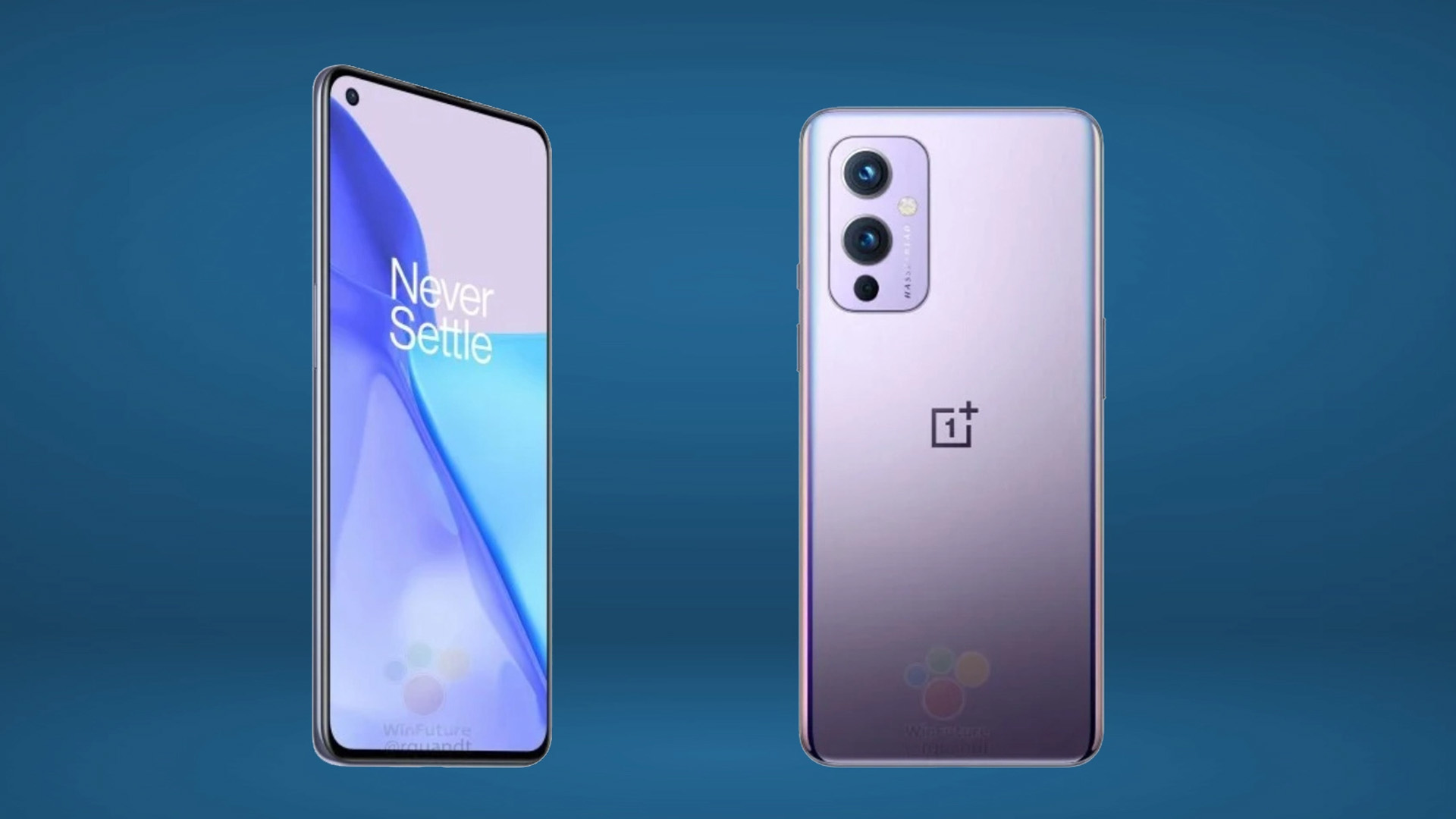The arrival of the Samsung Galaxy S21 in January seemed to suggest that zoom would be the next big battle ground for the best camera phones – but the imminent OnePlus 9 series clearly has other ideas.
The next big Android phone launch of the year, which will be revealed on March 23, has instead been built around OnePlus' new three-year partnership with Hasselblad. This will see the OnePlus 9 series benefit from 'Natural Color Calibration' processing that the company says will part of "our greatest leap forward in mobile photography yet".
But this Hasselblad partnership, as promising as it sounds, isn't the most exciting thing about the new flagship phones – and the OnePlus 9 Pro, in particular. Instead, we're way more buzzed about the many possibilities of the Pro'd Sony IMX789 sensor, which has been custom-designed for the phone.
The IMX789, and the wide camera's IMX677 sensor, might not sound as thrilling as promises about color science or Hasselblad heritage. But they do bring some powerful potential for both stills and video that will almost certainly be more important for its camera than the Hasselblad partnership. And we need only look back to Huawei for the reason why.
Brand wagon
There's no doubt that Hasselblad is a great name to put on a phone camera. The company, which is now owned by the drone maker DJI, is the grand leather armchair that the kids aren’t allowed to sit on.
The cheapest camera that Hasselblad makes costs thousands of dollars and its 'lens shade' – a piece of plastic used to reduce lens flare – costs more than the actual lenses we recommend to first-time DSLR buyers.

But was it the long-term partnership with optical powerhouse Leica that made Huawei the most dynamic camera phone designer of 2018 and 2019? Nope, it was Huawei's ambitious use of Sony sensors, ISP (Image Signal Processor) pipelines and some groundbreaking work on a multi-exposure night mode that every other phone manufacturer has since emulated.
In a similar sense, the Sony IMX789 will likely unlock a series of features that will almost certainly elevate OnePlus phone cameras to a new level of performance. These features include 12-bit raw, the ability to shoot 4K/120p video, omni-directional autofocus (fear not, we will explain later) and 'digital overlap' DOL-HDR, which is a new take on HDR (High Dynamic Range) image-making that we're particularly looking forward to seeing in action.
Range finder
That DOL-HDR feature is a new approach to HDR video and photography, and could be one the key things unlocked by the Sony IMX789 sensor on the OnePlus 9 Pro .
This technique has been around inside in-car cameras and security cameras for years, but it is a relatively new concept for phone cameras.
What's different about it? The standard approach when making an HDR image is to shoot two or more images in sequence. There's a bright one to capture shadow detail, a dark one to visualize the highlights, and usually a bunch in-between. This image data is collated into a single JPEG, and suddenly you have a phone camera that can take great images even when shooting directly into the sun.
However, this can introduce issues, as there is naturally a slight time delay between these exposures – this is what causes HDR ghosting. It's not usually too noticeable in today’s higher-end phones, but it limits how much HDR shooting you can actually do with, for example, the constant motion of a tree’s leaves as they blow in the wind.

The cool thing about DOL-HDR is that it dumps this strategy in favor of capturing two sets of information; a short and longer exposure at (effectively) the same time.
It might not be a complete panacea for HDR video. A normal camera constructs its image one line of sensor pixels at a line, and using DOL-HDR the two exposures happen per-line during the sensor read-out. This would, we assume, worsen the 'rolling shutter' effect in video a bit. But it could result in much more legit HDR video.
The proliferation of HDR content that is just SDR video that has been put through a relatively crude up-scaler algorithm should make us all a bit suspicious of how 'HDR' some high dynamic range modes actually are. The OnePlus 9 Pro's solution is a very promising one that we're looking forward to testing.
Raw materials
But DOL-HDR is far from the only exciting photographic trick that'll be unleashed by the OnePlus 9 Pro's sensor – perhaps equally promising is the ability to output 12-bit raw files.
A small caveat: we’re heading into the territory where the spec sheet outstrips what we can, or should, reasonably expect from a phone sensor. Still, the numbers are certainly impressive.
The OnePlus 8 Pro, for example, can take 10-bit raw stills, which means 1,024 gradations of color per color channel. That’s 1.07 billion color possible tones in total. The option of 12-bit raw, meanwhile, increases the finessing to 4,096 gradations per channel, for 68 billion potential color tones.

This is one area Hasselblad’s influence could actually have a meaningful effect. The company doesn’t make the sensor, and isn’t going to manufacture the OnePlus 9 Pro’s lenses, but it will likely work in consultation with OnePlus on areas like color science. OnePlus CEO Pete Lai suggested such when we talked to him recently.
OnePlus was already at a good starting point for this, as the OnePlus 8 Pro’s color is arguably a lot more natural than Samsung’s house style. But it sounds like the next generation are aiming to take this to the next level.
Video games
The signs from the Sony IMX789's sensor are equally promising for video.
For a start, the OnePlus 9 Pro is likely to be one of the first phones to offer 120fps slo-mo at 4K resolution. This feature was first seen in phones in the Sony Xperia 5 II, and that OnePlus is getting in on it relatively early is likely a neat side effect of OnePlus working with Sony on the 'custom' IMX789.
Sony often reserves new features for sensors that only end up in its own Xperia models. Its phone team has in the past messed up the opportunity, spoiling these head starts with crude image processing.
But the OnePlus 9 Pro gets ahead of the Samsung Galaxy S21 Ultra here, whose maximum 4K capture rate is 60fps.
There are also signs that the OnePlus 9 Pro might be doing something interesting with 8K video. Most cameras have 4:3 aspect sensors, but the Sony IMX789 is a 16:11 chip, which means it has a slightly more 'widescreen' shape.

Why is this important? It means the OnePlus 9 Pro might only need to apply around a 10% crop to use its main sensor’s native pixel resolution to capture 8K video. If it has, as is claimed, a 48MP sensor, the resolution is likely to be either 8,352 x 5,742 or 8,368 x 5,753 pixels – map that to 8K’s 7,680 x 4,320 resolution and you end up with that relatively modest 10% crop.
This is quite different to the Samsung Galaxy S21, which uses its 1.1x 64MP camera and a pretty healthy crop to the same end. Of course, the new OnePlus flagship may, like the Galaxy S21, use its secondary camera to capture that headline 8K video. This would makes sense if, as in most 48MP sensors, the IMX789 is actually made from the ground up to behave more like a 12MP sensor, using a Quad Bayer arrangement.
But we also know the OnePlus 9 series’s wide camera is the 50MP IMX766. That’s apparently a Quad Bayer sensor too, meaning these chips are really designed for 12-12.5-megapixel levels of detail, not the 33-megapixel detail of a pro-grade 8K camera.
Either way, let’s be honest – the OnePlus 9 Pro is a phone. Quad Bayer or not, we aren’t going to get such detail from the OnePlus 9’s 8K video. But it certainly sounds like the results could be among the most compelling we've seen from a smartphone.
Eyes everywhere
There is one last potential trick up the OnePlus 9 Pro's sleeve – it will also reportedly have 'omni directional AF'. That might sounds confusing, but there's no mystery here – the feature has already been used in phones like the Oppo Find X2 Pro and Huawei P40 Pro.
This is, one again, an application of something Sony has worked into its latest sensors, which have a 2x2 OCL (On-Chip Lens) pixel design.

In a standard Quad Bayer 48MP sensor designed for 12MP photos, the sub-pixels are arranged in little blocks of four. Four red sub-pixels, four blues and two sets of four green sub-pixels make up one pixel in the final image. Each of these subpixels also has its own micro lens, but the 2x2 OCL setup uses a lens for each color block of four sub-pixels, for better light capture and native sensitivity.
Add this to 'all-pixel' phase detection AF and you have a system that can detect focus in all directions, and do so more quickly in low light than a more traditional Quad Bayer design.

Proof is in the pictures
OnePlus’s phone launches are like wedding parties that are held six weeks after the actual event. By the time they happen, OnePlus has already spent weeks showing off photos of the ring and honeymoon on Instagram.
It's a similar story with the OnePlus 9 series – we already know about the Hasselblad partnership, while the Sony IMX789 sensor will definitely be part of the Pro version's selection box of rear cameras.
But it's the possibilities of the latter that has us most excited – the Hasselblad name might be so weighty that it's liable to crack a phone's glass back, but that custom sensor has, as we've seen, certainly got a lot of potential. We're very much looking forward to seeing whether it can live up to that billing when it launches on March 23.
- These are the best camera phones in the world right now
from TechRadar - All the latest technology news https://ift.tt/2PWMTmN